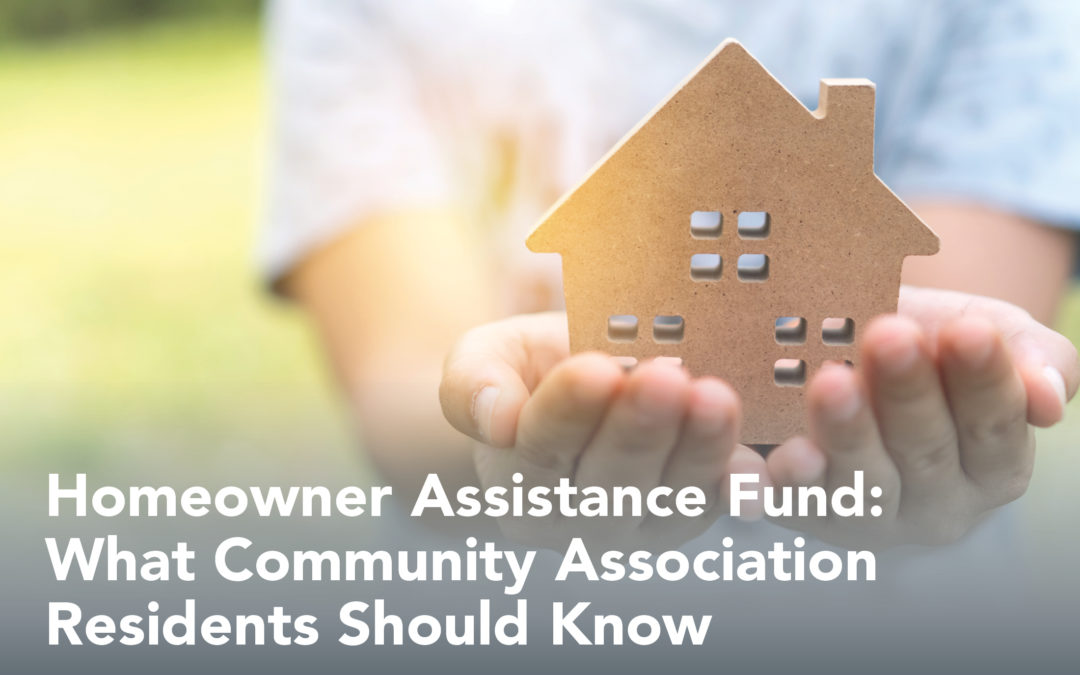The American Rescue Plan Act of 2021 created the $9.6 billion Homeowner Assistance Fund (HAF) to help homeowners who lost jobs and income as a result of the COVID-19 pandemic catch up on housing payments such as community association assessments, mortgages, and property taxes. The HAF program is managed by the U.S. Treasury Department, which coordinates with state governments to create HAF programs across the country.
CAI is tracking state implementation of HAF programs and identifying states where homeowners can receive help paying past due association assessments. Associations should encourage homeowners with assessment delinquencies or who are unable to make mortgage payments because of COVID-19 financial losses to apply for financial assistance from their state HAF program.
While not all homeowners will qualify for the program, applying is still beneficial. Many states offer other homeownership and foreclosure avoidance counseling to help homeowners recover from a COVID-19-related financial setback.
As of March 1, 26 states have fully operational HAF programs and nine are operating pilot programs. Of these 35 programs, homeowners in 27 states may receive funding to pay delinquent association assessments. Three state HAF programs will reimburse delinquent association assessments if paid through an escrow account. California, Missouri, and New Mexico have chosen to deny HAF assistance for homeowners with delinquent association assessments.
HAF Program Income Rules
Federal law requires states to prioritize HAF eligibility for lower income households and those that are socially disadvantaged. HAF eligibility is generally limited to households with annual incomes less than the area median income or the national median income, whichever is greater. For socially disadvantaged households, the annual income limit is 150% of area median income or the national median income, whichever is greater. The U.S. Department of Housing and Urban Development publishes income limits by state and county that identify the annual income that households can earn and still qualify for state HAF programs.
How State HAF Programs are Organized
The Treasury Department encourages states to tailor HAF programs to their needs. While there is some consistency in state HAF programs, there is considerable variation as well.
Some states operate mortgage reinstatement programs that bring all mortgage-related payments (including delinquent assessments) current. Other states have mortgage payment programs that help homeowners pay mortgages and housing costs for three months. Several other states have programs dedicated to addressing delinquent property charges including association assessments, utilities, insurance, and property taxes.
Homeowners Must Request Assistance
Only homeowners may apply to receive HAF assistance—a community association may not apply on a homeowner’s behalf. The application process typically begins with a homeowner accessing their state’s HAF program website to create an account. The second step involves a screening process to determine if a homeowner has experienced a qualifying COVID-19 financial hardship event and meets HAF household income requirements.
If a homeowner meets the basic HAF program requirements, additional information must be provided to document financial distress, verify delinquent housing costs, and identify associations, lenders, and mortgage servicers. Depending on the program, payments are made by the state HAF directly to the association or lender. Other states work with a homeowner’s mortgage servicer (the company that collects mortgage, insurance, and tax payments) to identify eligible delinquent amounts and make payments on behalf of the homeowner.
Amount of Assistance Varies by State
In 2021 the Treasury Department announced how the $9.6 billion in HAF program funding was distributed. States did not receive equal amounts of funding to establish HAF programs. Awards range from $1.1 billion in California, which received the largest amount, to the statutory minimum state award of $50 million.
States with lower HAF allocations tend to provide lower assistance to homeowners. States with higher HAF allocations tend to offer more program options and higher total funding amounts per household.
CAI continues to track and update state HAF programs and association assessment eligibility as more states finalize and establish HAF programs. CAI’s HAF resource page is regularly updated to reflect the most recent HAF program developments.



